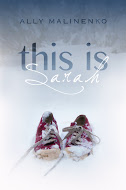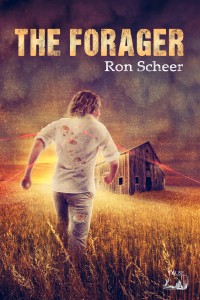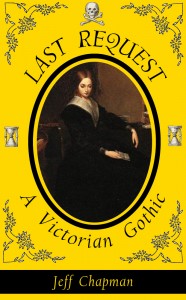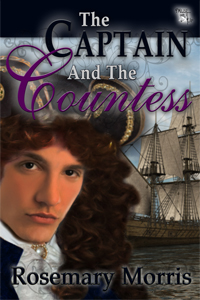Have you heard of BookFish Books? It just so happens to be a new publishing company run, among others, by a couple of my best writing buddies, Erin Albert and Mary Waibel. And one of their new releases is This Is Sarah by Ally Malinenko. Ally is here to talk about her favorite part of the writing process. Welcome, Ally!
 The best part of writing, for me, is the beginning. You know the part I’m talking about. That first moment where you see a character.
The best part of writing, for me, is the beginning. You know the part I’m talking about. That first moment where you see a character.
You picture her, standing on the train trestle, her hands clutching something. What? Anything. Down below someone calls her name and she starts running. Who is she? What is she running from? Why? What’s in her hand? In her head? In her heart?
That leads up to the first draft. I think a lot of people dislike the first draft. It’s full of mistakes.
Of bad writing.
Of atrocious moments of dialogue.
But I still like this part the best. The part when my brain spins faster than my fingers can slide over the keyboard. It’s all exciting and new and I’m not even sure what’s going to happen next. Look at me! I’m TELLING A STORY!
If only it was like that all the time.
Then comes editing, which should in fact be called Crippling Self Doubt. Revisions are difficult for me. Probably because I don’t take enough notes in the beginning. I don’t slow down. I don’t stop and think, say “Wait if X happens, what about Y?” I just write X X X X X X and then fall into some massive plot hole that I can’t claw my way out of. Next comes the wailing and gnashing of teeth.
And that was what I had been doing with the Sci-fi Time Travel TOME that I had been working on for years. The manuscript that no matter what I did it seemed determine to stay just inches out of my grasp.
And then something weird happened. One morning there was an image of a teenage boy, full of anger. Before he had a name I just called him “My furious boy.” And then a girl, trapped in a home she no longer knew how to navigate. In a family that was suddenly so foreign that she felt abandoned.
And the one person, his girlfriend, her sister, that they shared in common. The girl who got in her car one day and disappeared.
I slowly tried to fit them together like puzzle pieces – Colin (my furious boy) and Claire (my trapped girl), together on the good ship Heartbreak.
Like I said at the time I was (am) in the middle of a big revision on a very long, very complicated Time Travel Sci Fi TOME. But each morning, when I got up at 5 am to write, there was my furious boy and my sad girl. And over time, I started hanging out with them more.
I’m not going to say anything as ridiculous as “follow your Muse” because a) that sounds like the terrible sort of stuff that amateur (read: me) writers say and b) it makes it sound like your Muse is this elegant ghost-y thing in a white chiffon dress that sounds like Cate Blanchett when she whispers in your ear which is just ridiculous.
What I am saying is that sometimes your brain switches gears on you.
Go with it.
There’s a part of you that knows what story you want, what story you NEED to tell before you even do.
Trust that part of you. The rest is mostly typing.
This Is Sarah blurb:
When Colin Leventhal leaned out his bedroom window on the night of May 12th and said goodbye to his girlfriend, he never expected it would be forever. But when Sarah Evans goes missing that night, Colin’s world unravels as he is transformed from the boyfriend next door to the main police suspect. Then one year later, at her memorial service, Colin makes a phone call that could change everything. Is it possible that Sarah is still alive? And if so, what is Colin willing to do to bring her back?
And as Colin struggles with this possibility, across the street, Sarah’s little sister Claire learns how to navigate this strange new land that is life without her sister. Even as her parent’s fall apart, Claire is convinced to keep on going. Even if it kills her.
THIS IS SARAH is a meditation on loss, a tale of first love, and a harrowing journey about what it is to say finally let go and say goodbye.
Excerpt:
They found her red Chuck Taylor sneakers five miles from where her car was, deep in the woods.
One was unlaced, as if she had undone it and slipped her foot out of it right there under that canopy of trees.
The other was still tied.
Snow filled them like little red candies covered in sugar.
In the police station, in that evidence bag, they seemed so small, as the snow slowly melted off them, staining the fabric and dripping into the bottom of the bag. I couldn’t imagine them fitting Sarah’s feet. I couldn’t imagine them fitting my own.
Sarah’s empty shoes.
I thought about how they’d never be worn again. How she would never slide her foot inside, how her fingers would never tug those laces and loop them closed.
Her room back home was filled with things that would go unused. They’d just sit there, waiting for Sarah to come home, collecting dust.
All the things Sarah left behind.
When I saw the shoes, sitting in the police station, a noise escaped me. Not quite a sob, but a cry—a shock of disbelief—and my hope retreated as I realized I was now one of those things. Like her clothes, her jewelry, her records or her shoes.
I was just another thing Sarah left behind.
Ally Malinenko is the author of the poetry collection The Wanting Bone (Six Gallery Press) and the children’s fantasy Lizzy Speare and the Cursed Tomb (Antenna Books). She lives in Brooklyn with her husband.




























